UNDER CONSTRUCTION
US 22 TO INTERSTATE 79
A public meeting was held in Cecil
Township on March 12, 1997 to obtain comments on two proposed alignments
between US 22 and I-79: Red and Blue. The PTC furthered the
Blue alignment for further study, citing residential, commercial, and
community facility displacements, and unavoidable involvement with two
potentially contaminated properties with the Red alignment. The cost
of construction would be $23 to $43 million more with the Red versus the
$261 million projected for the Blue alignment.
Obviously, the
critics of the highway so far have been the residents along the proposed
alignment; however, one unlikely opponent came forward in 2000. State
representative John Maher, from Upper Saint Clair in Allegheny County has noted
the lack of interchanges with important highways, commenting that, "The
absence of access for people along this highway is so complete that it's no
surprise that people are rethinking support of this road." Critics
say the expressway does not include interchanges with busy highways such as US 19
and PA 50. Louis Philips, the head of the Route 50 Corridor Commission,
said that Turnpike officials will not allocate the necessary $35 million for the
interchange. He has also mentioned that he will not support the highway if
money is not made available for the connection. PTC officials have said
that an access highway is a local project and should be handled by other state and
regional agencies. Representative Maher said he objected to the expressway
for the same reason as Louis Philips. He also opposes a plan for the
beltway to travel over Canonsburg Lake, saying, "Any route that would
disturb Canonsburg Lake would be wholly unacceptable."
Even though construction has not begun,
nor even a definite route chosen, problems had arisen regarding the area where it
will connect to Interstate 79. In March 2003, the US Department of
Veterans Affairs completed acquisition of 275 acres of the former Morgan Farms
property in Cecil Township to develop a new regional National Cemetery and
planned to begin burials in late 2004. The problem was that the PTC is
planning to build an interchange with I-79 in the same area, and the VA was
concerned that it would impact the cemetery and reduce available land for
burials. Representatives from both sides met several times a month to
resolve the conflict. On May 24, 2004, an agreement was reached whereby
the PTC will avoid the "fast-tracked" area of cemetery property the VA
will utilize first and minimize visual impacts to the cemetery and disruptions
to access of the cemetery. So sufficient area is ensured to construct the
I-79 interchange, the VA will provide some portions of its property on both
sides of the Interstate and temporary easements for construction. In
return, the PTC will provide the VA replacement land for future expansion of the
cemetery on the east side of I-79.
The Turnpike
Commission appeared to be short of money to build this section as reported
in the October 1, 2006 edition of The Pittsburgh Post-Gazette.
Planning, preliminary engineering, and environmental studies have cost $12
million. There was another $64 million being held in escrow, $54
million for final engineering and design and $14 million toward an
estimated $24 million for right-of-way acquisition. That left a
$10 million deficit for purchasing land and a $593 deficit for
construction.
The
section between US 22 and Interstate 79 moved into the final phase, or
Step 10 of planning known as Final Design. The Final Environmental
Impact Study which was released in Fall 2006, suggested using the B-2
Alternative route for the 13.3-mile-long section beginning at the end of
the expressway at US 22 and passing to the south of the McDonald area to a
new interchange at I-79 between the existing Southpointe and Bridgeville
interchanges. The FEIS addressed earlier concerns over the visual
impact of the I-79 interchange to the US Department of
Veterans Affairs' National Cemetery of the Alleghenies. The interchange
layout also addressed local concern by providing access from Morganza
Road.
The Federal
Highway Administration signed the Record of Decision for the US 22 to I-79
section on September 3, 2008, and thus approved the B-2 Alternative. This step
allowed the PTC to proceed
with final design and right-of-way acquisition. Turnpike Commission
CEO Joe Brimmeier announced that three engineering firms had been
contracted for final design services and a two-year agreement has been
signed under which Orion Land Services of Apollo served as its agent
for right-of-way acquisition. They opened a local field office
and began formal notification of affected property owners and residents.
Estimates show that
approximately 105 residences and 11 businesses will be displaced.
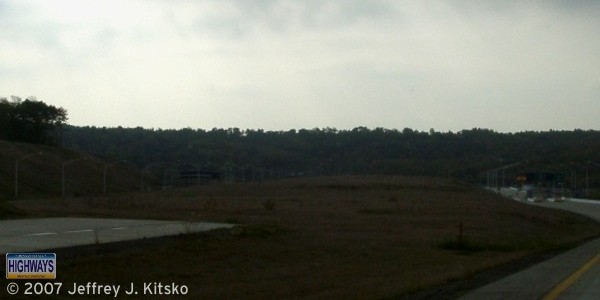
The former stub at the US 22 interchange near Santiago.
Construction
on this segment officially began on May 12, 2014, when Governor Tom
Corbett joined PTC Chairman William K. Lieberman, PTC Commissioner Sean
Logan, State Senator Timothy J. Solobay, and other state and local
officials for a groundbreaking ceremony at the US 22 interchange.
The first segment consists of two, $14 million bridges over US 22, and is the first part of a
$550 million project to complete the Southern Beltway between that route
and Interstate 79. "When I signed the transportation
plan, Act 89 into law last November, I made a commitment that construction
projects to improve safety, create jobs and spur economic development
would come quickly," Corbett said. "Today, as we break ground on
this section of Pittsburgh's Southern Beltway, a project that has been
stalled due to a lack of funding, I am delivering on that commitment."
The bridges for the mainline roadway over US 22 were completed in Fall
2015.
Mother Nature
must not have been too pleased by the project, and she showed her displeasure
by unleashing record rainfall during the months of February and April in 2018.
Independence Excavating of Cleveland had been working ahead of
schedule. Everything was in place to begin paving, which needed to
begin in May or early June to be able to finish before the weather turned
in October. Large sections of the alignment were deemed unsuitable
for paving, which had eliminated that leeway. "Weíre
down to being just on schedule because we lost all of our float,"
said Bob Kohlmyer, construction supervisor for CDR McGuire, the
turnpikeís construction manager for this project. "Weíre
on time as long as we donít lose any more days." In order to
keep on the timetable, a plan was devised to scrape off the top few inches
of dirt in the spring and use what was left as a subgrade base.
However, when inspectors ran tri-axle trucks filled with dirk over the
scraped land, it was found to be spongy in numerous places.
Inspectors marked off the soft spots with red paint and ordered workers to
remove the wet material and replace it with dry. "If you
have a spongy bottom, you canít dry it out," said Mr. Kohlmyer,
picking up an exposed clump of clay that was about the consistency of
Play-Dough. "Itís underneath something, so itís never going
to dry. You canít build on it. You have to take it down to
the wet, take it out and replace it, then pile the top back on."
The poor weather also slowed down work on the bridges over Little Raccoon
Creek, which acted as a main route for trucks carrying cement from the
mobile plant installed near the project area. Fortunately, most of
the bridge had been constructed, but the only remaining part to finish was
pouring concrete into its "blockouts," or the space between the
bridge and the ground at its ends, which was postponed until May 17,
2018. Bridges at Quicksilver Road and Candor Road were in various
stages of completion. Quicksilver Road's was nearly finished with
the exception of paving because it was difficult to get machinery in
later, and Candor Road's less farther along because itís completion
wasn't as time-sensitive.
An interesting
technique was used for the construction of the bridges over Little Raccoon
Creek in Washington County. Rather than using one crane to lift
beams into place, two were used due to the length needed to complete the
span. The innovated process uses two cranes using a two-foot welded
steel triangle and a couple of Kevlar straps to hold the beams in
place. The steel triangle is a new tool that was approved in 2016
for use on PennDOT and PTC projects, and Alvarez, Inc. of Canonsburg became
the first company in the state to use this new procedure. Joe
Schrecengost, a supervisor for Alvarez, built theirs after seeing an
Oregon company using it featured in a trade publication. It was
better than the old method of sliding the precast concrete across a dummy
steel slab placed across the open area and treated with Crisco or a
similar substance, then pulling the steel slab out. With the new
method, workers can place as many as six beams in one day, two or three
times as the old method. Using walkie-talkies and hand signals, the
crane operators are instructed how to guide the beams into place.
Three carpenters are stationed on the pier where the beam will rest with
one to lean against it to force it into the correct position. A
wooden plank is used at the abutment to make final adjustments and put the
beam into place on a four-inch-thick rubber pad. Next two carpenters
on a manlift find brackets at the midpoint of each beam where they attach
X-shaped steel braces to tie the beams together and make sure they remain
in place. When the workers are finished placing beams on one side of
the bridge, one crane is moved to the abutment on the other side so beam
placement can be completed on that end. After that, crews will
finish prepping the bridge for paving by placing two layers of
reinforcement bars and getting the road bed leading up to the bridge into
shape for paving on both sides of the bridge. Due to the muddy
conditions at the worksite, the cranes had to be placed on sets of
12-by-12-inch beams so they would not sink. The site was so muddy
that once a rig carrying a beam arrived on site, a front loader would have
to scrape the road ahead so it could get through. Trumbull
Corporation unveiled plans on May 2, 2018 for construction of a 1.7-mile
section from PA 50 to a point near the Interstate 79 interchange.
Cost for this segment will be $37.8 million and mostly involve
earth-moving work. Paul Boggs, project manager for Trumbull, told
about 50 residents at the South Fayette Township Volunteer Fire Department
in Cuddy that "The work will begin now" and last two
years. Coal Pit Run Road was permanently closed and Hickory Grade
Road was closed through mid-November 2019 so workers could cut a
70-foot-deep valley to carry the expressway below the road and erect a
300-foot bridge across. Not all were pleased with the PTC, such as
Melissa and Lou Quatro who live at one end of the proposed bridge and lost
three of their 10 acres for the project. They aren't pleased with
how the PTC treated them during the procurement and haven't settled their
case with the agency. "You canít stop a road but you
can certainly treat people right," said Melissa Quatro, whose daughter
had lived on the part of the property taken for the highway. "The good
news is the Trumbull people and (protect manager CDR) Maguire have been
great and theyíre the people who will be here." Mr. Boggs had
a somewhat positive outlook saying, "Once this is done, itís going to be a massive improvement... from
I-79 to the airport." He added, "At the end of the day, this is
going to be a big benefit to the region."
A $3.7 million
mistake was made by the Turnpike Commission in handling a substance known
as pickle liquor sludge which was found during excavation work. The
substance is a byproduct of polishing steel with an acid solution to
remove rust and other impurities. It was common practice in the
1940s and 1950s to add lime to neutralize the sludge and then bury it in
old strip mines. Test borings showed crews would find the sludge in
a two-mile section between US 22 and Quicksilver Road, but engineers
didn't expect to find any more in the future right-of-way. The state
Department of Environmental Protection ordered that the substance be
treated as a hazardous material. Instead of removing and storing
66,000 tons of the sludge found in the spring and summer of 2017 for reuse
elsewhere at the site, which designers had called for, the material would
have to be taken to a licensed landfill as a hazardous material. The
result was the commission board having to approve a $3.7 million change
order in the contract for Independence Excavating to cover the cost of
hauling, landfill fees, and covering the areas where the substance had
been temporarily stored. It was to be used as crews filled in
valleys, but neighbors complained about the smell. "We knew it
was there and there were plans for how to deal with it," said Mike
Shaak, assistant chief engineer for the turnpike. "As part of
construction, [Independence] excavated and started the
process." DEP spokesperson Lauren Fraley said the department
hadn't discussed pickle liquor with the PTC as part of the project for
more than a decade, but would not discuss when the department's standards
changed, why the material is hazardous, nor why the Turnpike Commission
will not receive a citation for the incident. It
was looking as if the Turnpike Commission might have to buy additional
properties along PA 980 near McDonald, where chronic flooding had become a
problem during construction. Two state lawmakers, Senator Camera
Bartolotta and Representative Jason Ortitay, sent a letter on July 2, 2018
demanding all work stop on the entire 13-mile-long project until the
flooding issues could be eliminated. In the letter, they
"demand that the turnpike and your contractors focus 100 percent on
your efforts on completing the storm water retention area and other flood
prevention measures before continuing with work on the Southern Beltway
project." While the agency hadn't responded, Brad Heigel, the
turnpike's chief engineer, said additional crews were added to deal with
the runoff problem. "I don't know if it's necessarily practical
to stop," Heigel said. "We're doing everything we can to
get this under control. We haven't turned the other cheek
here." He added, "If we know it's going to rain, we have
people on duty from our contactor and our management company to make sure
drains are open and handle any problems. We haven't said 'no' to
paying for anything that is needed to address this situation."
The area had a series of floods during the spring and summer of 2017 after
excavation for a Southern Beltway bridge. Additional runoff ponds
were created at the time and seemed to solve the problem. When crews
built an access road to install beams for the new bridge in June 2018, the
area was hit with heavy rain before runoff controls could be
implemented. Project engineer Matt Burd said one pond installed
after the previous year's flooding did have an overflow problem during a
storm on July 1, 2018. Crews were not able to determine if someone
had tampered with silk socks put around the pond to hold water back or the
socks were compromised due to the amount of water. Mr. Heigel said
the best course of action would be to complete the construction as soon as
possible because the permanent runoff measures will work once the project
is done. He noted that unusually heavy rains have hit communities in
southwestern Pennsylvania causing flooding issues. "Honestly, I
thought we had most of this behind us after the changes we made last
year," Heigel said. "It definitely has been a
struggle. It frustrates me as much as it frustrates the
residents." Adding, "but we'll continue to work until we
get it right." The
first contact involving the section with the interchange with Interstate
79 was awarded in August 2018 to Independence Excavating of Cleveland for
$23.6 million for work that began in October 2018 and lasted a year.
Aside from excavating about 700,000 cubic yards of dirt and building
bridges, it included relocating Morgan Road and making adjustments on
other local roads near the National Cemetery of the Alleghenies. It
would have its own challenges with the cemetery and construction of
bridges over Interstate 79 and the Southern Beltway, in addition to
construction of a roundabout at the convergence of Morgan, Baker, and
Morganza roads. The interchange with the interstate would be a
daunting construction project. "We're not going to adjust I-79
up or down so we're going to have to work around it," said Josh
Farley, assistant manager on that section for turnpike consultant CDR
Maguire. The 1.8-mile-long section is estimated to cost $150 million
to $250 million, 50% more expensive than any of the other seven segments
comprising the entire project between US 22 and Interstate 79, and could
end up close to one-third of the total cost of the entire project. Having
to move Morgan Road about 20 feet south of its former alignment required
closure between Morganza Road and the cemetery entrance. After
months of discussions, the National Cemetery of the Alleghenies and
Turnpike Commission agreed to allow the main entrance to remain open, but
visitors would have to take a more circuitous route. "We knew
we had to keep access to the cemetery," Steele said.
"That's one of the key points here: being good to our
neighbors." Assistant cemetery director, Ed Hajduk, said it
would be "a challenge" to maintain the solemn atmosphere during
the two years of construction, but praised the PTC for its cooperation.
"Unfortunately, this will create disturbances not normally seen
around the cemetery," he said. "Normal access is not going
to be there. We will apologize in advance to families for what's
going on and keep the disturbances down as much as we can."
Work on the interchange will include creating a "valley" under
Interstate 79 for ramps, building the ramps between the two roadways, and
excavating under the new bridge on Morgan Road which would being in
February 2019. "This section's got the most complicated
geometry involved in the whole project," said Josh Farley.
"Going under I-79 will take a lot of coordination and
teamwork." While the expressway is slated to open in 2021, this
interchange might not be completed until 2022.
Acid
drainage, which plagued Interstate 99 in the middle of the state, was
also a thorn in the side of this section. Turnpike officials told
residents that there was some occurring near the construction site of two
curved bridges over Nobelstown Road in Washington County, and would be
dealt with when work began on the next section of the expressway in
2019. The PTC's construction engineer manager, Steve Hrvoich, said
it is rare for them to be dealing with acid drainage but after studying
the area for years, were ready with a plan to combat the drainage. A
passive limestone treatment system was constructed six months before
construction began on the roadway itself and consists of a collection
basin 10 to 12 feet deep filled with limestone. The contaminated
water passes through the limestone and is neutralized. Flooding and acid
drainage were not the only obstacles in the way. Plugging old oil
and gas wells also caused issues for construction crews. The PTC
sought bids to close up a maximum of 15 wells but a total of 27 were
found. Joseph B. Fay Company was paid an additional $778,685 to
cover the additional wells. The area around McDonald has a long
history of oil and gas drilling; however, there was no accurate documentation
showing well locations or their conditions. "We haven't had
this experience with wells before so it's all new to us," said Brad
Heigel, the turnpike's chief engineer. "We were aware of the
history of the area. When we got out there and started clearing the
land, we found more than we expected." Some were uncapped,
which can relapse oil or gas again if they are disturbed and pollute
ground water. York Drilling of Mount Morris was subcontracted to cap
the wells, and another company specializing in drones were brought in to
fly ones outfitted with metal detectors over the future path to identify
as many wells before bid specifications are set. The concrete used for
construction of the roadway is a new type being used for the first time by
the Pennsylvania Turnpike Commission, while PennDOT has used it in
projects six times since 2012. It is called long-life concrete which
uses a mix with more small stones and less water, which should last at
least 40 years with minimal repairs. Its manufacturing is so
intricate that the American Concrete Pavement Association held Just in
Time classes in June 2018, a month before paving began, to make sure the
PTC and its contractors knew the procedures. All through the day,
the amount of water and air in the concrete is adjusted to produce the
right mixture. If there's not enough water, sprinklers are activated
to wet the storage piles or too much and the amount is reduced, and air is
injected if it is determined there is not enough to provide room for the
concrete to expand and contract. Each day samples are taken to the
field office and put into a machine that squeezes them until they
burst. They must withstand 3,000 pounds per square inch for after
seven days and 4,000 pounds after 28 days to be acceptable to the PTC.
Crews had wanted to start pouring the surface by mid-June, but due to the
wet spring and summer that year, it was pushed to July. In order to
get the paving done by October, crews had to work every day, starting at 4
AM, and work through all kinds of weather.
When
the Coronavirus, or COVID-19, pandemic swept into the country in March
2020, the PTC took measures to stem the spread to their employees and
staff. One thing they did was halting construction projects
temporarily, including the Southern Beltway, until safety procedures could be put into
place. For this project, it included employees taking their
temperatures when they leave from home and arrive at work, additional
hand-washing stations and sanitizing wipes at the site, and maintaining a
safe distance from co-workers during duties ranging from excavating dirt
to placing bridge girders to installing drainage. Even reporting to
the site had to change, as one worker can only ride in a vehicle at a
time, which means workers have to drive their person vehicles farther into
the site or walk a long distance after parking their vehicles. The
first full week of April saw workers return, but the week prior, crews
were sanitizing machinery and equipment left idle along Interstate
79. "The main challenge will be for workers to perform their
tasks while maintaining a minimum six feet from other workers," said
Steve Hrvoich, the turnpikeís construction engineering manager for the
beltway project. "Certain operations that require workers to
get closer may experience decreased productivity."
|
PROPOSED
INTERSTATE 79 TO PA TURNPIKE 43
The US Army
Corps of Engineers and US Environmental Protection Agency along with the
Turnpike Commission released the Draft Environmental Impact Statement for
the Interstate 79 to Mon-Fayette Expressway section on December 17,
2007. Several alternatives, including the No Build Alternative, are
presented in detail with the Tan, Green, and Purple Alternatives in the
western section and Tan, Red, and Tan-Red Alternatives in the eastern
section of the study area. The DEIS suggests the Green Alternative
for the western section and Tan-Red Alternative for the eastern
section. No decisions will be made until all comments on the DEIS
are received.
The Record of Decision for the I-79
to PA Turnpike 43 section was issued on May 13, 2009 when the Army Corps
of Engineers signed off on the estimated $730 million project. The
approval designates the 12.5-mile Green Alternative Option 1A/Tan-Red
Alternative as the selected alternative which is located entirely in
Washington County. This marks the end of a 17-year-long development
process that began in June 1992. There are an estimated 96
residential displacements and three business displacements.
The
ROD might have been the easiest part of the project as funding for
construction is not coming so easy. "We are very proud
of the fact that we have been able to get all of these projects through
the environmental process and construct the majority of them. It is
unfortunate that because of funding shortages we will not be able to
advance the I-79-to-Mon-Fayette Expressway project to final design at this
time," Joseph Brimmeier, PTC CEO said. So far the Turnpike
Commission has spent $29 million on the portions yet to be built. At
a meeting in April 2009, the PTC's Chief Engineer Frank Kempf told attendees
that "there is a funding gap between the amount of financing that a
private concern might bring to the table" and the remaining segments
of this expressway and Turnpike 43 are estimated to cost up to $5 billion.
When it appeared
that this expressway would end up on the scrap pile, as so many planned
expressways for Pittsburgh have ended up, a glimmer of hope came on
December 21, 2012. Pennsylvania Turnpike Commission Chairman William
K. Lieberman announced that day that final design work would be
reactivated on the US 22 to I-79 segment. Construction would take
approximately six years to complete, depending on funding availability,
with an anticipated opening date around 2020. The estimated $632.5
million project, which includes engineering, property acquisition, utility
relocation, and construction will be funded with a mix of state tax
revenues, bonding, and federal loans. For the first time, a PTC
project will use no toll dollars for funding. Also
a first will be how tolls are collected on this segment. In
conjunction with the commission's five-year plan to convert to a cashless
system, this expressway will be designed for All-Electronic Tolling (AET).
Utilizing this system will mean less money will need to be spend for land
acquisition for toll plazas because only overhead gantries equipped with
E-ZPass readers and video cameras will be needed. The first two contracts
were awarded January 13, 2014: one for the bridge to carry the
Southern Beltway over US 22 and another for management of the
project. Beginning in 2016, the PTC
expects to begin awarding contracts for construction of the roadway and
the five interchanges in this segment.
PA TURNPIKE 43 TO
INTERSTATE 376
On December 7, 2004,
the Federal Highway Administration approved the Environmental Impact Study for
this section, giving approval to the PTC to begin final design and right-of-way
acquisition. "This Record of Decision represents the successful
culmination of 12 years of environmental studies and preliminary engineering to
identify the best route for the Pittsburgh regionís long awaited Parkway
South," said Turnpike Chief Executive Officer Joe Brimmeier. Approximately $300 million is committed to the project from preliminary
engineering through to final design and right-of-way acquisition, but don't
worry, the Turnpike Commission has at least $826 million in the bank.
"[We] are
absolutely determined to make this a model of urban freeways throughout the
country," said Turnpike Engineer Frank Kempf. Consultants have been
instructed to work closely with representatives of the communities they cross.
Kempf said, "These people will be neighbors of the highway for the next 100
years." Letters to the consultants were sent out three days later
to give them the "go ahead" to start work. Five Design Advisory Teams will
be established to address issues that may arise, and be set up for Turtle Creek,
Dravosburg, Braddock-Swissvale-Rankin, and two areas in the City of Pittsburgh:
Nine Mile Run and Glenwood-South Oakland-Hays. The project will pass
through parts of East Pittsburgh, Turtle Creek, Wilkins, and Penn Hills. A
decade is the proposed timetable for design, right-of-way acquisition, utility
relocation, and ultimately construction. However, some segments might open
early, possibly the PA 51 to PA 837 section. Interchanges will be built at
East Pittsburgh-McKeesport Boulevard in North Versailles, Thompson Run Road and
Old William Penn Highway in Penn Hills, Business US 22 and I-376/US 22 in
Monroeville. Right-of-way acquisition should begin in late 2007.
 |
Looking northeast at the
Westinghouse Bridge in East Pittsburgh. (Pennsylvania Turnpike Commission) |
 |
Looking northwest in
Turtle Creek showing potential relocation of Penn Plaza. (Pennsylvania Turnpike Commission) |
The new chairman
of the PTC, William Lieberman of Squirrel Hill, used the opening of the
remainder of the Mason-Dixon Link to declare this last section his top
priority. "It's my number one goal as chairman of the Turnpike
to eventually, sooner rather than later, cut a ribbon opening West
Virginia to Monroeville," he said in a later interview. "I think
this is vital to the economy and the quality of life in Western
Pennsylvania." While not having firm plans on how to revive the
project, he did say it would probably have to be built in phases rather
than all at once.
The Turnpike's
chief engineer Frank Kempf said, "The first thing that has to happen
[to restart them] is funding has to come available." The
Mon-Fayette Expressway without its northern section is "certainly not
what we envisioned or what the Legislature envisioned when they charged
the turnpike with building it," Mr. Kempf said. "But I don't
call it a failure." At a meeting with about 40 Mon Valley
leaders and residents on March 1, 2010 at the Palisades on the
Youghiogheny River, US Senator Arlen Specter delivered a promise but no
funding. "I don't think there's any highway in the state as
important as the Mon-Fayette Expressway. I'm committed to do everything I
can do to get you funding to move it ahead." A top PTC official
said after the meeting that the project is, for now, "dead in the
water," but Senator Specter reassured the crowd that he hoped to
include the project in the next long-term federal surface transportation
bill..
After years of
no action, the Turnpike Commission finally made moves to continue building
of the remaining section of the Mon-Fayette Expressway. Giving
testimony before the Senate Transportation Committee in Harrisburg on June
16, 2015, Commission Chairman Sean Logan announced that the project was
being revived with the exception of the controversial leg from Duquesne
into Pittsburgh. The leg to Oakland was dropped "because it
required many residential and business displacements, had numerous
environmental impacts and was unaffordable given available funding,"
Mr. Logan said. He added that cost reduction ideas are being
incorporated into an amended design, such as a narrower median,
realignment of a bridge over the Monongahela River at Duquesne, and using
all-electronic toll collection, which would put the price tag of
continuing the expressway to Monroeville at $1.7 billion. Joseph
Kirk, a longtime champion of the project and Executive Director of the Mon
Valley Progress Council, was pleased with the news, saying that it has
long been needed to help revitalize a region impacted by the collapse of
the steel and related industries in the 1980s. The highway would
open up more than 1,000 acres of former industrial sites for development
and revitalize towns that still have not recovered from the loss of more
than 150,000 jobs. He has also proposed that the Martin Luther King
Jr. East Busway be extended about three miles to connect to the expressway
and developing park-n-ride facilities to give drivers an alternate means
of getting downtown, something Allegheny County Executive Rich Fitzgerald
has said the county is interested in pursuing. Meanwhile, George
Jugovic Jr., chief counsel for PennFuture, a citizens group that has
opposed the expressway extension said, "There continues to be
misaligned priorities. Theyíre going to spend $2 billion on more
miles of highway while we donít have enough money to fix the roads and
bridges we have." He did agree with the elimination of the
alignment to Pittsburgh saying it "makes sense, but eliminating
something thatís a really bad idea doesnít mean the rest of it is a
good idea."
|


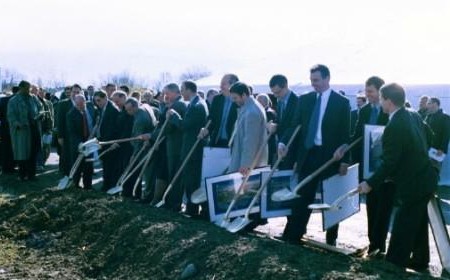
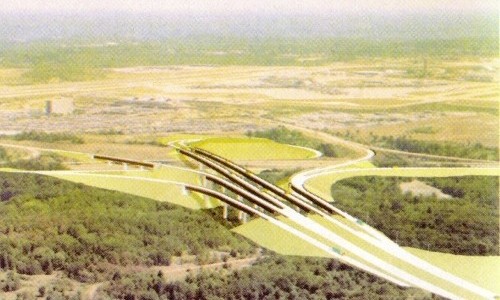
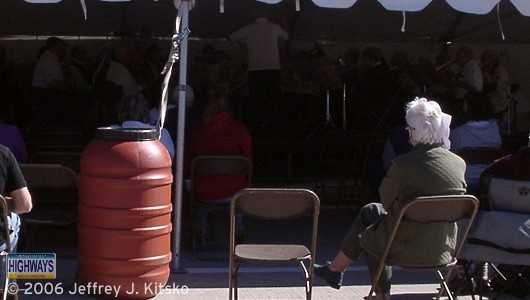
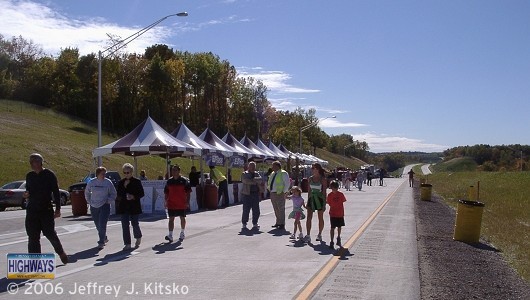
 There
had been speculation as to what
designation would be placed on this highway when completed. I had
believed that it would receive an odd PA Turnpike x43 since it will be a spur
off of PA Turnpike 43. Matt Boyko, contributor to
Pennsylvania Highways, forwarded an e-mail response
from Joe Agnello of the Pennsylvania Turnpike Commission. The message said,
"Based on our current plans, the Southern Beltway will
be designated Pa. Route 576 or Pennsylvania Turnpike 576. Ultimately, we
believe that major chunks, at the least, of both the Mon/Fayette Expressway
and Southern Beltway systems will receive Interstate designation from the
Federal Highway Administration."
There
had been speculation as to what
designation would be placed on this highway when completed. I had
believed that it would receive an odd PA Turnpike x43 since it will be a spur
off of PA Turnpike 43. Matt Boyko, contributor to
Pennsylvania Highways, forwarded an e-mail response
from Joe Agnello of the Pennsylvania Turnpike Commission. The message said,
"Based on our current plans, the Southern Beltway will
be designated Pa. Route 576 or Pennsylvania Turnpike 576. Ultimately, we
believe that major chunks, at the least, of both the Mon/Fayette Expressway
and Southern Beltway systems will receive Interstate designation from the
Federal Highway Administration."
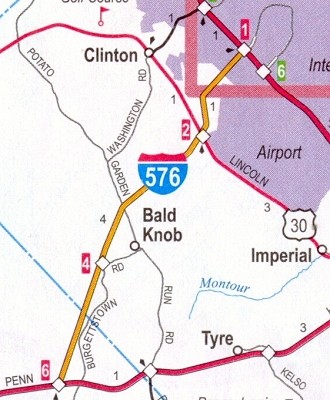
 INFORMATION
INFORMATION